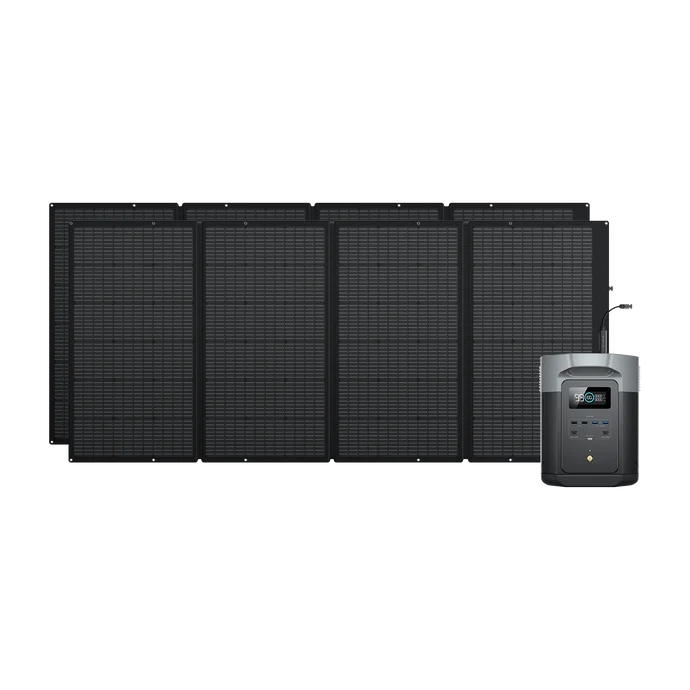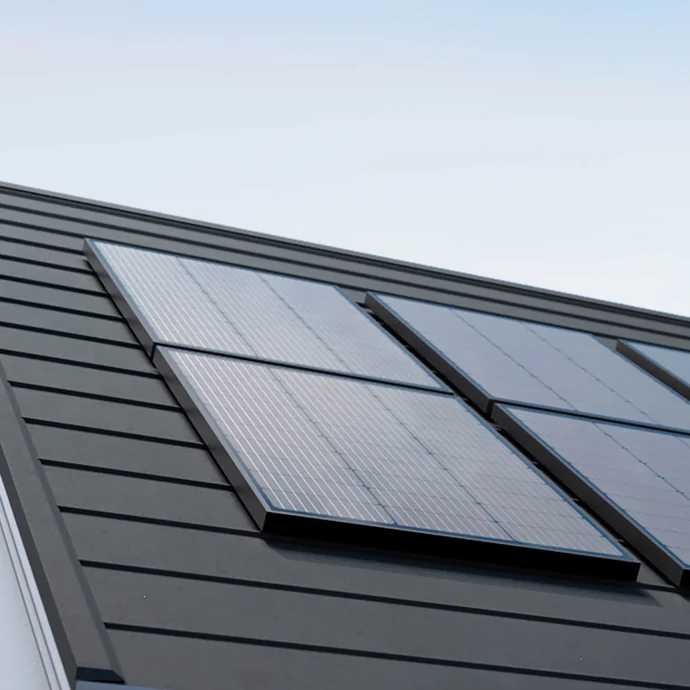How to Use a Portable Solar Panel to Charge Your Power Station Efficiently
- How Do You Connect a Portable Solar Panel to Your Power Station?
- What’s the Best Way to Position Your Portable Solar Panel?
- How Long Does It Take to Charge a Power Station?
- Can You Use Multiple Portable Solar Panels for One Power Station?
- How Should You Prepare and Maintain a Portable Solar Panel?
- One Setup, Many Possibilities
- FAQs about Portable Solar Panel
A portable solar panel gives you power independence when you need it most. But many users find it confusing to set up, connect, or optimize solar charging, especially when the weather changes or time is limited. If you’ve recently bought a power station or plan to travel with one, this guide will walk you through exactly how to use a portable solar panel to charge it efficiently. We'll focus on real-world methods, connection steps, and performance tips that are easy to follow.
How Do You Connect a Portable Solar Panel to Your Power Station?
A portable solar panel doesn’t work until it’s connected the right way. That connection depends on cables, ports, and the input range of your power station.
Most portable solar panels use MC4 connectors. These are industry-standard plugs that carry solar current safely. If your power station supports MC4 input, just plug them in. If not, you’ll likely need an adapter cable, like MC4 to XT60, MC4 to Anderson, or MC4 to DC 5521. The port names may sound technical, but most solar panel kits include a compatible cable or a user manual showing which one to get.
Before connecting anything, check three things:
The voltage range accepted by your power station
The maximum input wattage
That the panel is fully unfolded and exposed to sunlight
Once you're sure about compatibility, plug the solar cable into the panel first, then into the power station. Most units will show a solar input reading within a few seconds. If you don’t see anything, reposition the panel or check your cable connections.
Connecting a portable solar panel shouldn’t take more than five minutes. With experience, it becomes second nature.
What’s the Best Way to Position Your Portable Solar Panel?
Sunlight is never constant. Even a high-efficiency portable solar panel needs the right angle to work at full power. So the way you place the panel matters more than most people expect.
Start by facing the panel directly toward the sun. If you're in the Northern Hemisphere, that means generally south-facing. The angle should roughly match your latitude in degrees. At noon, the sun is at its highest, so your panel should lie flatter. In the morning and late afternoon, tilt it steeper.
The best portable solar panels include a kickstand or angle guide. Some even offer markers to help align with the sun. If yours doesn’t, place something under the back edge to tilt it manually. Try to adjust every 2–3 hours for maximum output.
Avoid placing the panel flat on the ground, especially on grass or dirt. This causes two problems:
Heat builds up under the panel, lowering efficiency.
The rear side may miss out on reflected light if it’s a bifacial panel.
Also watch out for:
Shadows from trees, tents, or gear
Dust or leaves covering the panel
Windy conditions that could move or topple it
Proper placement can increase energy output by up to 30% over a poorly aligned setup. Don’t skip this step.
How Long Does It Take to Charge a Power Station?
Charging time depends on four things:
The size of your power station (measured in watt-hours, or Wh)
The wattage of your portable solar panel
Sunlight quality and exposure
Any power loss due to cable resistance or partial shading
Let’s use simple math to estimate:
Charging Time (hours)=Battery Capacity (Wh)/Actual Solar Input Power (W)
Portable Solar Panel | Power Station Size | Full Sun Charging Time |
220W | 300Wh | ~1.5–2 hours |
220W | 1000Wh | ~5.5–6.5 hours |
220W | 2000Wh | ~11–13 hours |
These numbers assume strong midday sun and good positioning. On cloudy days or winter afternoons, expect much longer charging times—sometimes twice as long.
Some portable solar panels are “bifacial”,which means they collect sunlight from both sides. This can add up to 25–28% more power if the rear panel is exposed to reflective surfaces like sand, snow, or pavement.
For example, the EcoFlow NextGen 220W Bifacial Portable Solar Panel is one of the few lightweight models with rear-side generation and an integrated adjustable stand. Its TOPCon N-type solar cells boost overall efficiency to around 25%, which means better performance even in partial shade or cooler light. The panel is IP68 rated, so rain or dust won't damage it. You can carry it in a car, deploy it on uneven ground, and pack it in minutes.
It’s a strong fit for users who care about faster charging without hauling heavy, rigid panels.
Can You Use Multiple Portable Solar Panels for One Power Station?
Yes, you can combine portable solar panels. But doing it correctly depends on how your power station handles solar input.
There are two ways to expand:
Series connection: Adds voltage
Parallel connection: Adds amperage (current)
Most portable solar panels connect in series. For example, linking two 220W panels in series sends double the voltage at the same current. This works only if your power station accepts the total voltage. If not, you risk overload and shutdown.
Parallel connection uses a Y-branch adapter. This method keeps the voltage constant but adds more current. It's safer for power stations with low voltage limits.
Here’s a quick example:
Setup | Voltage | Current | Total Wattage |
Single 220W panel | 21.8V | 10.1A | ~220W |
Two in series | 43.6V | 10.1A | ~440W |
Two in parallel | 21.8V | 20.2A | ~440W |
Most modern stations limit solar input to around 400–800W, so combining two panels is often ideal.
Also consider:
Extra cables and adapters
Weight and space for carrying panels
Setup time and coordination in outdoor settings
Only expand when your needs call for it, like powering an RV fridge or running devices for hours.


How Should You Prepare and Maintain a Portable Solar Panel?
Your portable solar panel works best when it’s clean, protected, and well-positioned.
Here’s a short checklist to follow before and after each use:
Before use:
- Check for dust or smudges on both sides
- Confirm that all cables are intact
- Wipe with a dry microfiber cloth if needed
- Test output briefly before full deployment
After use:
Clean the surface gently with a soft cloth
Fold it along pre-set creases (not freestyle)
Coil cords loosely to avoid bending
Store in a cool, dry place away from sharp objects
Avoid pressing down hard on folded panels. Most portable solar panel cells are semi-flexible, but they still crack under pressure. Store flat if possible, especially during transport.
If your panel includes a storage case, always use it. This protects the surface from accidental scratches and sunlight that could reduce its lifespan when not in use.
Also check the panel’s IP rating. An IP68 panel resists rain, puddles, and light snow. But high winds or saltwater spray may still harm it over time. Keep exposure to extremes short when possible.


One Setup, Many Possibilities
Using a portable solar panel is one of the simplest ways to recharge a power station without fuel, noise, or grid power. When you know how to connect it correctly, place it at the right angle, and estimate charging time based on wattage, you’ll get more power and less frustration.
Products like the EcoFlow NextGen 220W Bifacial Portable Solar Panel combine efficiency, weather resistance, and thoughtful design. That makes them easier to use and more reliable in real-world conditions. For users in the U.S. who need portable power for road trips, backup plans, or off-grid work, learning how to use your panel the right way is a smart investment.
Charging with solar should feel easy, not overwhelming. With a bit of practice, your portable solar panel becomes a quiet partner you can count on—no outlet required.
FAQs about Portable Solar Panel
Q1: Can a portable solar panel charge a power station through a window?
Only partially, and not efficiently. Glass blocks a significant portion of solar radiation, especially UV and infrared light, which reduces charging speed by up to 70%. For safe and effective charging, always place the portable solar panel outdoors. If you must charge indoors, consider tilt-adjustable windows or low-emissivity glass to reduce energy loss—but performance will still be limited.
Q2: Is it safe to leave a portable solar panel plugged in all day?
Yes, it is generally safe. Modern power stations regulate input automatically to prevent overcharging or overheating. However, prolonged exposure to intense sunlight or reflective surfaces can raise panel temperature, slightly reducing efficiency over time. To maintain long-term performance, avoid placing the panel on metal roofs or sealed surfaces without airflow. Passive ventilation helps extend both panel and battery lifespan.
Q3: What size portable solar panel do I need for weekend camping?
A 200–300W portable solar panel is ideal for 2–3 days of light to moderate use—charging phones, LED lights, cameras, and powering a small cooler. For cloudy conditions or heavier loads like portable fridges, consider a bifacial model with higher efficiency. The key is matching your daily power use (in Wh) with the expected daily solar output, factoring in 20–30% energy loss.
Q4: How do I know if my portable solar panel is underperforming?
Use your power station's input wattage display as a real-time indicator. If input consistently shows 50–60% below rated panel output on clear days, check for common issues: shadowing, dirty surface, incorrect angle, or damaged connectors. If problems persist, measure voltage with a multimeter. A healthy panel should output close to its rated open-circuit voltage (Voc) under direct sunlight with no load attached.